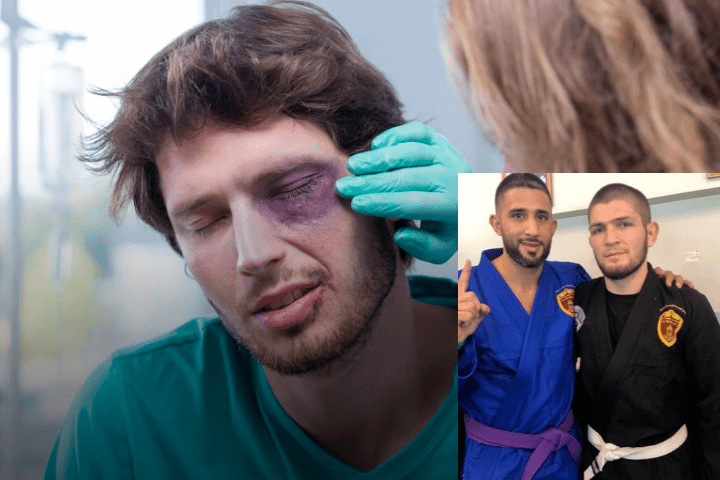You know him. Jumping around even if it doesn’t quite make sense to do so. Accidentally punching you in the face from time to time. Rolling as if it’s a matter of life and death. He’s not a bad guy for sure. He might be actually pretty decent as a blue belt. But he just can’t help it. His spaz nature is real. If you’re a white or blue belt, and have ever wondered what to do with your ultra aggressive blue belt training partner, this article is for you. (I assume purple, brown, and black belts have figured it out and have your own preferred way to deal with such ultra aggressive blue belts.)
My advice to you is very, very simple: Stay safe, slow him down, and use sparring with him as an opportunity to practice specific techniques/positions.
Here are some strategies to help tame and neutralize spazzy white belts during rolling:
- Stay Calm and Composed: Maintain a calm and relaxed demeanor. Showing frustration or irritation can escalate the situation, whereas staying composed can have a calming effect on your partner.
- Control the Pace: Use your superior technique and experience to slow down the roll. Establishing control through grips and positioning can reduce the white belt’s ability to spaz.
- Use Strong Positions: Positions like side control, mount, or closed guard can be very effective in limiting a white belt’s erratic movements. Focus on controlling their hips and shoulders to reduce their mobility.
- Prioritize Safety: Safety should always be the top priority. If you feel that the roll is getting too wild, it’s okay to verbally remind your partner to slow down for safety’s sake.
- Employ Defensive Techniques: Work on your defensive game. Use frames, guard retention techniques, and movement to defend against their unpredictability without being overly aggressive.
- Communication is Key: Don’t hesitate to communicate with the white belt. Let them know if they are being too aggressive or if their movements are potentially dangerous.
- Lead by Example: Demonstrate how to roll effectively and safely. Showing control, technique, and respect can set a positive example for less experienced practitioners.
- Tap Early if Needed: If you find yourself in a risky position or if a submission is applied erratically, it’s better to tap early and avoid injury.
- Avoid High-Risk Techniques: It might not be the best time to practice high-risk moves or submissions that require a lot of movement and coordination, which can be unpredictable with spazzy partners.
- Choose Your Battles: If you feel that rolling with a particular white belt is consistently unsafe, it’s okay to politely decline or choose a different training partner.
- Provide Feedback: After the roll, offer constructive feedback. Sometimes white belts aren’t aware of their intensity or lack control due to inexperience.
Remember, most white belts are not spazzy intentionally; they’re often just overwhelmed and trying to survive. With patience and guidance, they can learn to roll more effectively and safely. As a more experienced practitioner, your approach can significantly influence their development and understanding of BJJ.


















